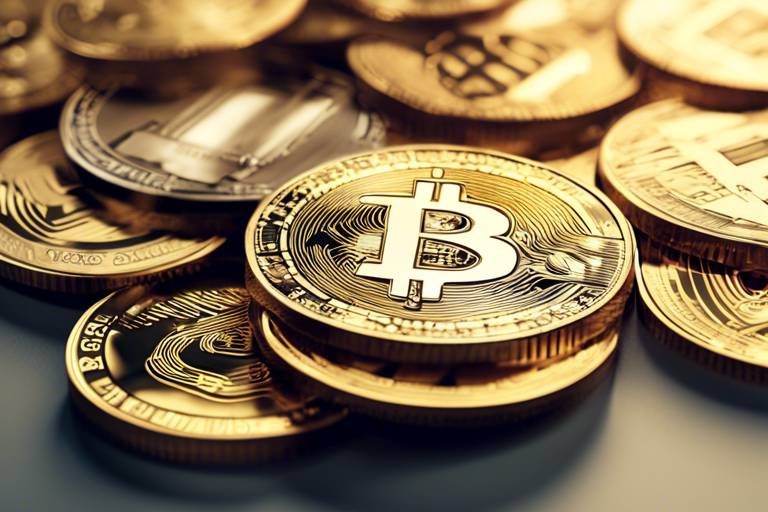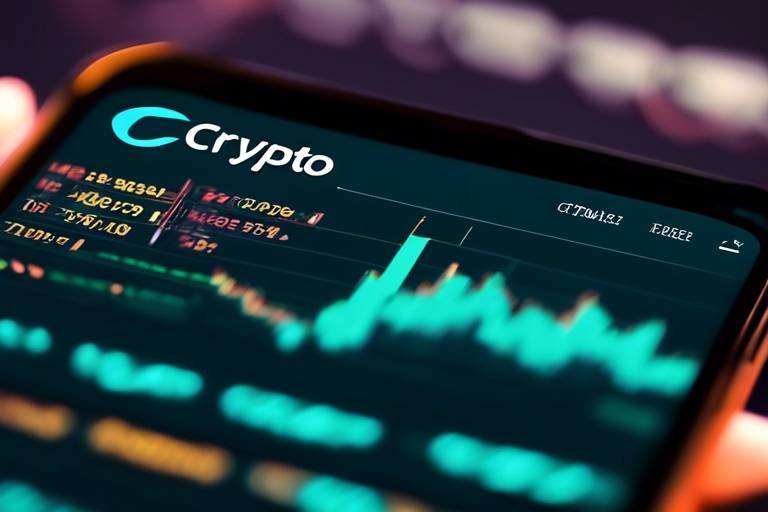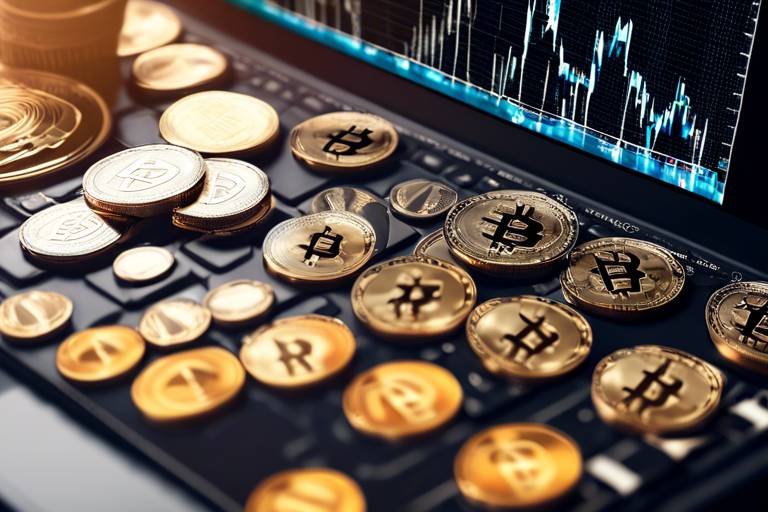Exploring the Concept of Digital Scarcity
In our fast-paced digital age, the concept of digital scarcity has emerged as a fascinating phenomenon, reshaping how we perceive value in the online world. Unlike tangible assets, digital items can be duplicated endlessly, leading to a question: how can something that can be copied so easily hold value? The answer lies in the innovative frameworks that have been developed to impose scarcity on digital assets, transforming them into coveted items that people are willing to invest in. This article will take you on a journey through the intricacies of digital scarcity, examining its implications on the economy and how it influences our understanding of value in a world dominated by bytes and pixels.
At its core, digital scarcity refers to the deliberate limitation of the availability of digital assets. Think of it as a digital equivalent of a limited-edition physical item, like a rare baseball card or a signed album. Just as the rarity of these physical objects drives up their value, the same principle applies to digital assets. This scarcity is often enforced through technology, particularly blockchain, which allows for the creation of unique tokens that cannot be replicated. This technological backbone is what gives rise to phenomena such as Non-Fungible Tokens (NFTs), which have taken the art world by storm and have begun to seep into various other industries, including music and gaming.
The significance of digital scarcity cannot be overstated. It has not only created new markets but also challenged traditional economic models. As consumers become more aware of the potential value of digital goods, their purchasing behaviors shift. The allure of owning something unique in a sea of infinite copies can be intoxicating, leading to a surge in demand for limited-edition digital items. With this demand comes the potential for investment opportunities, as savvy individuals seek to capitalize on the growing interest in digital assets.
As we dive deeper into this fascinating topic, we'll explore the role of NFTs in embodying digital scarcity, the market dynamics that drive the prices of these assets, and the challenges that arise from this new paradigm. We'll also look at successful case studies that illustrate the principles of digital scarcity in action, providing a clearer picture of how this concept is reshaping our understanding of value in the digital economy.
- What is digital scarcity? Digital scarcity refers to the limited availability of digital assets, which gives them value and demand.
- How do NFTs relate to digital scarcity? NFTs (Non-Fungible Tokens) are unique digital assets that embody digital scarcity, allowing for ownership and value in the digital space.
- What are the economic implications of digital scarcity? Digital scarcity creates new markets and alters traditional economic models, influencing consumer behavior and investment strategies.
- What challenges does digital scarcity present? Issues such as copyright concerns, environmental impact, and market manipulation are significant challenges associated with digital scarcity.

Understanding Digital Scarcity
In our increasingly digital world, the concept of digital scarcity has emerged as a game-changer, redefining how we perceive value and ownership. At its core, digital scarcity refers to the limited availability of digital assets, which creates a unique blend of value and demand. Unlike traditional goods, which can be produced in abundance, digital assets can be designed to exist in finite quantities. This finite nature is what gives them their allure and significance in today's economy.
Imagine walking into a gallery filled with countless replicas of a famous painting. While they may look identical, the original piece holds a certain prestige and value that the replicas simply cannot match. This analogy perfectly encapsulates the essence of digital scarcity. In the digital realm, assets such as artwork, music, and even virtual real estate can be created in limited editions, thereby establishing a perceived value that drives consumer interest and investment.
The significance of digital scarcity is further amplified by the rise of technologies such as blockchain, which ensures the authenticity and provenance of digital assets. By utilizing decentralized ledgers, creators can verify ownership and scarcity, making it nearly impossible to counterfeit these digital treasures. This technology not only enhances trust among buyers but also fosters a vibrant marketplace where uniqueness is celebrated.
Moreover, the implications of digital scarcity extend beyond mere ownership; they influence how we interact with digital content. For instance, consider the world of video games, where limited-edition skins or in-game items can fetch astronomical prices among players. The thrill of owning something rare can lead to fierce competition, driving up prices and creating a bustling economy around these digital goods.
To better understand the impact of digital scarcity, it's essential to recognize its role in shaping consumer behavior. When individuals perceive that an asset is scarce, they are often more inclined to take action—whether that means purchasing an NFT, investing in a digital collectible, or even participating in an online auction. This sense of urgency can create a frenzy that not only boosts sales but also elevates the asset's market value.
In conclusion, digital scarcity is not just a passing trend; it is a fundamental shift in how we conceptualize value in the digital age. As we continue to explore this fascinating landscape, it becomes increasingly clear that understanding digital scarcity is crucial for anyone looking to navigate the complexities of the modern economy.

The Role of NFTs
Non-fungible tokens, or NFTs, have taken the digital world by storm, bringing a new dimension to the concept of ownership. Imagine owning a piece of art that exists only in the digital realm, something that cannot be replicated or forged. That’s precisely what NFTs offer. They are unique digital assets verified using blockchain technology, which means each token is distinct and cannot be exchanged on a one-to-one basis like traditional currencies or cryptocurrencies. This uniqueness is what fuels their value and has revolutionized how we perceive ownership in the digital space.
So, why are NFTs so special? The answer lies in their ability to embody digital scarcity. In a world where everything can be copied and shared endlessly, NFTs create a sense of rarity. This scarcity translates into value, making them highly sought after by collectors, artists, and investors alike. For instance, a digital artwork sold as an NFT can fetch millions of dollars, not just because of the art itself, but because of the ownership and the story behind it. The thrill of owning something that no one else can possess is a powerful motivator.
The impact of NFTs extends beyond just art. They have transformed various industries, including music, gaming, and even sports. Artists can now sell their music as NFTs, allowing them to retain more control over their work and earn a fairer share of the profits. Gamers can purchase unique in-game items that truly belong to them, which can be traded or sold on secondary markets. Sports fans can own digital collectibles of their favorite athletes, creating a new way to engage with their passions. The possibilities are endless!
However, the rise of NFTs also raises important questions about value perception. What makes a digital asset valuable? Is it the artist's reputation, the rarity of the piece, or the emotional connection it evokes? As we delve deeper into the world of NFTs, it's crucial to understand that the value of these assets is often driven by community engagement and market dynamics. The more people believe in the worth of an NFT, the more valuable it becomes.
To illustrate this further, let's consider a few notable examples of successful NFT projects:
| Project Name | Description | Value |
|---|---|---|
| Beeple's "Everydays" | A digital collage sold as an NFT | $69 million |
| CryptoPunks | Unique pixelated characters, each with distinct traits | $11.8 million (highest sale) |
| Bored Ape Yacht Club | A collection of unique ape avatars with community perks | $3.4 million (average sale) |
These examples highlight how NFTs can generate significant financial returns, but they also demonstrate the volatile nature of the market. As more creators enter the space, the competition increases, and the landscape can shift rapidly. Understanding these dynamics is essential for anyone looking to navigate the world of NFTs.
In conclusion, NFTs are not just a trend; they represent a fundamental shift in how we think about ownership and value in the digital age. As we continue to explore this fascinating realm, it's clear that digital scarcity, embodied by NFTs, is reshaping our economy and culture in profound ways.
- What are NFTs? NFTs are unique digital tokens that represent ownership of a specific item or piece of content on the blockchain.
- How do NFTs create value? NFTs create value through their uniqueness and scarcity, as well as the emotional and financial investment of buyers.
- Can NFTs be sold? Yes, NFTs can be bought and sold on various online marketplaces, often fetching high prices depending on demand.
- What are the risks associated with NFTs? Risks include market volatility, potential copyright issues, and environmental concerns related to blockchain technology.

Creating Value through Ownership
In the ever-evolving landscape of digital assets, the concept of ownership has taken on a new dimension, primarily driven by digital scarcity. When we think about ownership, we often picture tangible items like a car or a house. However, in the digital realm, ownership can be just as impactful, albeit in a different way. Imagine owning a one-of-a-kind digital artwork or a rare tweet—these are not just pixels on a screen; they represent a unique claim that can carry significant value. This unique ownership experience is what creates perceived value in the digital marketplace.
So, how does this work? The essence of digital ownership lies in the ability to prove that a particular asset is unique and scarce. This is where Non-Fungible Tokens (NFTs) come into play. Each NFT is a digital certificate of authenticity that confirms the ownership of a specific digital asset. Think of it like owning a signed baseball card—there are many cards out there, but yours is special because it has a signature that no one else possesses. This uniqueness is what drives demand and, consequently, value.
Moreover, the emotional connection that people develop with their digital assets cannot be overlooked. When someone purchases an NFT, they are not merely buying a digital file; they are investing in a piece of culture, a slice of creativity, or a moment in time. This emotional investment can lead to a willingness to pay a premium price, further reinforcing the idea that ownership creates value. For instance, a piece of digital art sold as an NFT can fetch millions, not just because of its aesthetic appeal but also due to the story behind it and the artist's reputation.
Additionally, ownership of digital assets often comes with a community aspect. Many NFT projects foster communities around their assets, providing owners with exclusive access to events, additional content, or even future releases. This sense of belonging can enhance the perceived value of the asset, making it more than just a financial investment but a part of a larger narrative or movement.
To illustrate this concept further, consider the following table that outlines how digital assets create value through ownership:
| Aspect | Description |
|---|---|
| Scarcity | The limited availability of an asset enhances its value. |
| Authenticity | NFTs provide proof of ownership and authenticity. |
| Emotional Connection | Ownership fosters a personal connection to the asset. |
| Community | Many digital assets come with exclusive community benefits. |
In conclusion, the value created through ownership in the digital space is multifaceted. It intertwines scarcity, authenticity, emotional connection, and community, forming a robust framework that enhances the perceived worth of digital assets. As we continue to navigate this digital frontier, understanding these dynamics will be crucial for both consumers and investors alike.

Market Dynamics of Digital Assets
The market dynamics of digital assets are a fascinating blend of supply, demand, and unique characteristics that define their value. To understand how these dynamics work, we must first recognize that digital assets, unlike physical ones, can be created, replicated, and distributed with ease. This ease of production can lead to an oversaturated market if not managed properly, resulting in a decrease in perceived value. However, the concept of demand plays a crucial role in maintaining the value of these digital assets.
When we talk about digital scarcity, we’re essentially referring to the limited availability of certain digital assets, which can create a buzz around them. Just like a limited edition print from a famous artist, the more exclusive a digital asset is, the more people are willing to pay for it. This is where the interplay between supply and demand becomes particularly interesting. For instance, if a popular NFT is released in limited quantities, the demand can skyrocket, leading to bidding wars among collectors. This phenomenon can be likened to a rare Pokémon card; its value increases significantly due to its limited availability and the fervor of collectors.
Moreover, the market for digital assets is heavily influenced by trends and societal factors. The rise of social media and online communities has created environments where digital assets can gain traction rapidly. When a particular NFT catches the eye of influencers or celebrities, the demand can surge overnight. This creates a volatile market where prices can fluctuate dramatically based on public interest and hype. For example, the NFT market saw a significant boom in 2021, with sales reaching astronomical figures, driven by the enthusiasm of both investors and collectors.
Another critical aspect of the market dynamics is the role of platforms that facilitate the buying and selling of digital assets. These platforms often have their own algorithms that can influence visibility and, consequently, demand. A well-optimized platform can make a digital asset more accessible, thereby increasing its market presence. Conversely, if a digital asset is buried under a plethora of offerings, it may never reach its potential value. This is where marketing strategies come into play, as creators and sellers need to ensure their assets are seen and desired.
To illustrate the market dynamics, let’s take a look at a simplified table that outlines the key factors influencing the value of digital assets:
| Factor | Description |
|---|---|
| Supply | The total number of digital assets available for purchase. |
| Demand | The desire and willingness of buyers to purchase the asset. |
| Market Trends | Changes in consumer preferences and technological advancements. |
| Community Influence | Impact of social media and influencers on the asset's popularity. |
| Platform Visibility | How easily the asset can be found and purchased on selling platforms. |
In conclusion, the market dynamics of digital assets are complex and multifaceted. Understanding these dynamics is essential for anyone looking to invest or participate in the digital economy. As we continue to navigate this digital landscape, the interplay between supply, demand, and societal trends will undoubtedly shape the future of digital assets.
- What are digital assets? Digital assets are any items of value that exist in a digital format, such as cryptocurrencies, NFTs, and digital art.
- How does digital scarcity affect value? Digital scarcity increases the perceived value of an asset by limiting its availability, similar to rare physical collectibles.
- What role do NFTs play in digital scarcity? NFTs (non-fungible tokens) uniquely identify ownership of digital assets, creating a sense of scarcity and exclusivity.
- Can the value of digital assets fluctuate? Yes, the value of digital assets can be highly volatile and influenced by market trends, demand, and community interest.

Case Studies of Successful NFTs
When it comes to understanding the phenomenon of digital scarcity, examining successful NFTs can provide invaluable insights. These case studies not only highlight how digital assets can create significant value but also showcase the innovative ways in which artists and creators are leveraging technology to redefine ownership. One of the most notable examples is the NFT artwork "Everydays: The First 5000 Days" by digital artist Beeple, which sold for a staggering $69 million at Christie’s auction. This piece is a collage of 5,000 individual images, representing a daily practice that Beeple maintained for over thirteen years. The sale not only shocked the art world but also sparked a conversation about the legitimacy and valuation of digital art.
Another remarkable case is the NBA Top Shot, a platform that allows fans to buy, sell, and trade officially licensed NBA collectible highlights. These digital moments are minted as NFTs and have generated millions in sales, demonstrating how sports franchises can engage with their fan base in new and exciting ways. For instance, a highlight of LeBron James dunking sold for over $200,000, illustrating the intersection of fandom and digital ownership.
Additionally, the CryptoPunks project, which consists of 10,000 unique 24x24 pixel art characters, has become a cultural icon in the NFT space. Some of these punks have sold for millions, with one fetching a record price of $11.8 million. The allure of CryptoPunks lies in their scarcity and the community that has formed around them, emphasizing how digital assets can foster a sense of belonging and identity among collectors.
These case studies reveal several key principles of digital scarcity:
- Uniqueness: Each NFT is one-of-a-kind, which drives demand and value.
- Provenance: The blockchain technology ensures transparent ownership history, enhancing trust.
- Community Engagement: Successful NFTs often foster vibrant communities that contribute to their value.
In summary, the success of these NFT projects illustrates how digital scarcity is reshaping our understanding of value, ownership, and community in the digital age. As creators continue to innovate and explore new ways to engage audiences, the potential for NFTs to disrupt traditional markets remains immense.
What are NFTs?
NFTs, or non-fungible tokens, are unique digital assets verified using blockchain technology, representing ownership of a specific item or piece of content.
How do NFTs create value?
NFTs create value through their uniqueness, scarcity, and the emotional connection that collectors have with the digital items they own.
Are NFTs a good investment?
Like any investment, NFTs carry risks and rewards. Potential investors should conduct thorough research and consider market trends before investing.
What challenges do NFTs face?
NFTs face challenges such as copyright issues, environmental concerns related to blockchain technology, and market volatility.

Challenges of Digital Scarcity
While digital scarcity has opened up exciting avenues for ownership and value creation, it also presents a myriad of challenges that we must navigate. One of the most pressing issues is the question of copyright. In a world where digital assets can be easily replicated, determining who truly owns a piece of digital art or a song becomes increasingly complex. Imagine buying a painting only to find out that countless digital copies exist online, undermining your sense of ownership. This dilemma is particularly evident in the realm of NFTs, where artists and creators are often left grappling with the implications of their work being sold as unique tokens while still being available for free on various platforms.
Another significant challenge lies in the environmental impact of digital scarcity. The technology that underpins NFTs, particularly blockchain, requires substantial energy to maintain. This has raised eyebrows among environmentalists and consumers alike, leading to a growing concern about the carbon footprint associated with minting and trading these digital assets. For instance, a single transaction on the Ethereum blockchain, which is commonly used for NFTs, can consume as much energy as an average household uses in a week. As more people become aware of these environmental implications, it may affect the demand for certain digital assets.
Moreover, the potential for market manipulation is a worrisome aspect of digital scarcity. Just like in traditional markets, where insider trading and pump-and-dump schemes can distort value, the digital space is not immune to similar tactics. Unscrupulous individuals can artificially inflate the prices of NFTs or digital assets, creating a bubble that inevitably bursts, leaving genuine investors at a loss. The lack of regulation in this rapidly evolving market exacerbates these issues, making it crucial for potential buyers and sellers to conduct thorough research before diving into investments.
In addition to these challenges, the psychological aspect of digital scarcity cannot be overlooked. Consumers often associate scarcity with value, leading to irrational buying behaviors. The fear of missing out (FOMO) can drive prices to unsustainable heights, resulting in a volatile market that can be both exhilarating and dangerous. This psychological manipulation can create a cycle where buyers are drawn into purchasing assets at inflated prices, only to face regret when the market corrects itself.
To summarize, while digital scarcity offers a new frontier for ownership and value, it is fraught with challenges that require careful consideration. From copyright issues to environmental concerns and market manipulation, the landscape of digital assets is complex and ever-changing. As we continue to explore this digital frontier, it’s essential to remain vigilant and informed, ensuring that we navigate these challenges wisely.
- What is digital scarcity?
Digital scarcity refers to the limited availability of digital assets, which creates value and demand in the digital economy. - How do NFTs relate to digital scarcity?
NFTs are unique digital tokens that embody digital scarcity, allowing for ownership and value in the digital space. - What are the environmental concerns associated with NFTs?
The blockchain technology used for NFTs consumes significant energy, raising concerns about its carbon footprint. - Can digital assets be manipulated in the market?
Yes, similar to traditional markets, digital assets can be subject to manipulation, leading to inflated prices and potential losses for investors.

The Economic Implications
Digital scarcity has emerged as a game-changer in the economy, fundamentally altering how we perceive value and ownership in the digital realm. As we dive into the implications of this concept, it's essential to recognize that digital scarcity is not just a buzzword; it is a transformative force reshaping traditional economic models. The rise of digital assets, particularly through mechanisms like NFTs, has opened new avenues for investment and commerce. This new landscape is characterized by a unique interplay of supply and demand, where scarcity drives value much like it does in the physical world.
One of the most significant economic implications of digital scarcity is the creation of new markets. Just as limited-edition physical goods can command high prices, so too can digital assets that are scarce. This phenomenon has led to the emergence of vibrant marketplaces where digital artworks, music, and virtual real estate are bought and sold. The economic behavior surrounding these transactions is fascinating; buyers are often willing to pay a premium for digital items that are certified as unique or limited in quantity. This shift has made the digital marketplace a hotbed for investment opportunities, attracting not just collectors but also institutional investors looking to diversify their portfolios.
Moreover, the concept of digital scarcity challenges traditional economic theories. In the past, economics was largely concerned with tangible assets and physical goods. However, with the advent of digital scarcity, we are witnessing a paradigm shift where digital assets are recognized for their intrinsic value. The rise of cryptocurrencies and blockchain technology has further solidified this shift, providing a decentralized framework that enhances the credibility and security of digital transactions. As more people embrace digital assets, we can expect to see a ripple effect on traditional financial systems, potentially leading to new regulations and economic models that accommodate these digital innovations.
To better illustrate the economic implications of digital scarcity, consider the following table that outlines key differences between traditional assets and digital assets:
| Aspect | Traditional Assets | Digital Assets |
|---|---|---|
| Ownership | Physical possession required | Verified through blockchain |
| Scarcity | Limited by physical resources | Limited by digital protocols |
| Market Access | Often restricted to local markets | Global access via online platforms |
| Transaction Speed | Can be slow and cumbersome | Instant transactions possible |
As we navigate this evolving landscape, it is crucial to understand the investment opportunities that digital scarcity presents. Investors are increasingly turning their attention to digital assets, viewing them as viable alternatives to traditional investments. However, this new frontier is not without risks. The volatility of digital markets can lead to significant fluctuations in value, and potential investors must conduct thorough research before diving in. Understanding the dynamics of supply and demand, as well as the underlying technology, is essential for making informed investment decisions.
In conclusion, the economic implications of digital scarcity are profound and far-reaching. As we continue to explore this new digital frontier, we will likely see further innovations that challenge our understanding of value and ownership. The future of digital assets is bright, but it also requires careful navigation to fully harness their potential. With the right approach, digital scarcity can pave the way for new economic opportunities and reshape the financial landscape as we know it.

Investment Opportunities
As the digital landscape continues to evolve, in digital assets are becoming more appealing to a diverse range of investors. The allure of owning a piece of the digital pie—whether it be an NFT, a digital artwork, or a unique virtual asset—has captured the attention of both seasoned investors and newcomers alike. So, what makes these digital assets so enticing? For starters, the potential for significant returns is hard to ignore. Many early adopters of NFTs have seen their investments skyrocket in value, sometimes yielding profits that traditional investments could only dream of.
However, with great opportunity comes great risk. The market for digital assets can be incredibly volatile, influenced by trends, public interest, and even social media buzz. To navigate this landscape effectively, investors need to stay informed and make decisions based on thorough research. For instance, understanding the underlying technology, the rarity of the asset, and the reputation of the creator can significantly influence the asset's value. Investors should ask themselves:
- What is the story behind the digital asset?
- Who is the creator, and what is their track record?
- How does this asset fit into the broader market trends?
Moreover, the rise of decentralized finance (DeFi) has opened up new avenues for investment. Platforms that allow users to lend, borrow, and trade digital assets are becoming increasingly popular, offering potential rewards for those willing to engage with them. Yet, it’s essential to approach these opportunities with caution. The decentralized nature of these platforms can sometimes lead to risks that are not present in traditional finance.
To illustrate the potential returns and risks associated with investing in digital assets, consider the following table:
| Asset Type | Potential Returns | Risks |
|---|---|---|
| NFTs | High (up to 10x or more) | Market volatility, liquidity issues |
| Cryptocurrencies | Variable (can fluctuate widely) | Regulatory risks, hacking threats |
| Digital Real Estate | Moderate to High | Market trends, valuation uncertainty |
In conclusion, while the digital asset space offers exciting investment opportunities, it requires a careful approach. Investors must balance the potential for high returns with the inherent risks of a rapidly changing market. As the landscape of digital scarcity continues to develop, being informed and adaptable will be key to capitalizing on these opportunities.
1. What are NFTs?
NFTs, or non-fungible tokens, are unique digital assets that represent ownership of a specific item or piece of content, like art, music, or collectibles, on a blockchain.
2. Are digital assets a safe investment?
Like any investment, digital assets come with risks. Their value can be highly volatile, and investors should conduct thorough research before investing.
3. How do I buy an NFT?
You can buy NFTs through various online marketplaces, such as OpenSea or Rarible, using cryptocurrencies like Ethereum.
4. What factors influence the value of digital assets?
Factors include rarity, creator reputation, market trends, and the overall demand for the asset.

Future Trends in Digital Scarcity
The concept of digital scarcity is evolving at a rapid pace, much like the technology that underpins it. As we look ahead, several trends are poised to shape the future of digital assets and their perceived value. First and foremost, we can expect advancements in blockchain technology to enhance the security and transparency of digital ownership. This will not only build trust among consumers but also encourage more individuals to engage with digital assets, from art to virtual real estate.
Moreover, the rise of metaverse environments is creating new avenues for digital scarcity. Imagine a virtual world where digital goods have real-world value, where a unique pair of virtual sneakers can be as coveted as a limited-edition physical pair. As more people immerse themselves in these digital realms, the demand for scarce digital items will likely skyrocket, giving rise to new marketplaces and economic models.
Additionally, the integration of artificial intelligence in the creation of digital assets is another trend to watch. AI-generated art and music are already gaining traction, and as these technologies become more sophisticated, the uniqueness of AI-generated pieces could further enhance the concept of digital scarcity. However, this raises questions about authenticity and ownership, which will need to be addressed to maintain the integrity of digital assets.
Furthermore, we may witness a shift in regulatory frameworks surrounding digital assets. Governments and regulatory bodies are beginning to take notice of the implications of digital scarcity on the economy. As they establish clearer guidelines, it could lead to increased legitimacy and protection for digital asset owners, fostering a more stable investment environment.
In terms of environmental sustainability, the future of digital scarcity will likely be influenced by a growing emphasis on eco-friendly practices. With concerns about the carbon footprint of blockchain technologies, particularly in the case of energy-intensive cryptocurrencies, there may be a push towards more sustainable alternatives. This could reshape how digital assets are created and traded, potentially leading to innovations that minimize environmental impact.
Lastly, we should consider the role of social media and influencers in driving trends in digital scarcity. As influencers promote certain digital assets, they can create a buzz that significantly increases demand. This phenomenon has already been observed with NFTs, where celebrity endorsements can lead to skyrocketing prices. Keeping an eye on social trends and the influence of key figures in the digital space will be crucial for understanding future market dynamics.
In conclusion, the future of digital scarcity is bright yet complex. With technological advancements, evolving consumer behavior, and regulatory changes, we are on the brink of a new era in which digital assets will play an increasingly central role in our economy. As we navigate this landscape, staying informed about these trends will be essential for anyone interested in the world of digital scarcity.
- What is digital scarcity?
Digital scarcity refers to the limited availability of digital assets, which creates demand and value in the digital economy.
- How do NFTs relate to digital scarcity?
NFTs, or non-fungible tokens, are unique digital assets that embody the concept of digital scarcity by providing proof of ownership and authenticity.
- What are some potential future trends in digital scarcity?
Future trends may include advancements in blockchain technology, the rise of metaverse environments, the integration of AI in asset creation, regulatory changes, a focus on sustainability, and the influence of social media.
Frequently Asked Questions
- What is digital scarcity?
Digital scarcity refers to the limited availability of digital assets, which creates a sense of value and demand in today's digital economy. Just like rare collectibles in the physical world, digital items can also be scarce, making them more desirable.
- How do NFTs relate to digital scarcity?
Non-fungible tokens (NFTs) are unique digital assets that embody the concept of digital scarcity. Each NFT is distinct and cannot be exchanged on a one-to-one basis, much like a signed painting or a limited edition item, which enhances its value and ownership experience.
- What challenges are associated with digital scarcity?
While digital scarcity creates value, it also brings challenges such as copyright issues, environmental concerns due to energy-intensive blockchain processes, and the risk of market manipulation. These factors can complicate the landscape for investors and creators alike.
- How does digital scarcity impact the economy?
Digital scarcity significantly alters traditional economic models by creating new markets and influencing consumer behavior. It encourages investment in digital assets and reshapes how we perceive value in a digital context.
- What are the investment opportunities in digital assets?
Investors are increasingly viewing digital assets as viable opportunities due to their potential for high returns. However, it's essential to consider the risks involved, as the market can be volatile and unpredictable.
- What future trends should we expect in digital scarcity?
The landscape of digital scarcity is continually evolving, with technological advancements likely to shape its future. We might see new forms of digital assets emerge, changing how scarcity is perceived and valued in the digital realm.



















